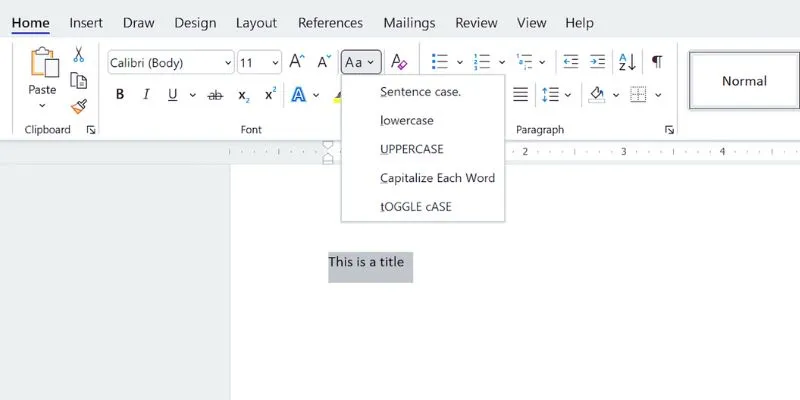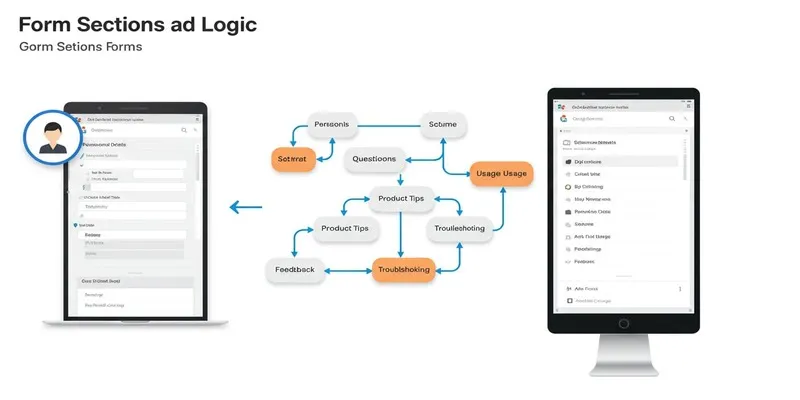Simple Ways to Split Text Data in Excel and Google Sheets
To organize and understand large datasets, you often need to separate text in Excel and Google Sheets. These platforms offer tools to split text using delimiters, positions, or patterns, which simplify project workflows, enhance efficiency, and improve data management and analysis.
Text Separation in Microsoft Excel

Excel provides several options for splitting text, such as Text-to-Columns, Flash Fill, and various formulas. These methods allow you to separate text by delimiters like commas or spaces, or even automate the process.
Text-to-Columns
Using Text-to-Columns, Excel allows you to split text in a single column into multiple columns based on delimiters like commas, spaces, or tabs, or by using fixed widths. This method is great for splitting names, handling addresses, or breaking up a CSV file for better analysis.
Steps to Use Text-to-Columns:
- Select the column containing the text you want to split.
- Go to the Data tab and click Text-to-Columns.
- Choose Delimited (for character-based splitting) or Fixed Width (for specific position splitting).
- Select the delimiter (e.g., space, comma, tab) and click Next.
- Choose the destination cell and click Finish.
Using Flash Fill
Flash Fill makes it easy to split or combine text as it automatically learns the structure of your data. This tool is simple and quick, eliminating the need for complex formulas.
Steps to Use Flash Fill:
- Type the desired split result in the adjacent column.
- Press Ctrl + E (Windows) or Cmd + E (Mac).
- Excel will auto-fill the remaining cells based on the pattern.
Using Formulas (LEFT, RIGHT, MID, FIND, LEN)
Excel formulas provide powerful tools for dynamic text separation, essential for organizing complex data.
Common Text Separation Formulas:
-
LEFT: Retrieves a set number of characters from the start of a text string.
Example:=LEFT(A2,5)extracts the first 5 characters from cell A2. -
RIGHT: Retrieves a set number of characters from the end of a text string.
Example:=RIGHT(A2,3)extracts the last 3 characters from cell A2. -
MID: Extracts characters from any position within a text string.
Example:=MID(A2,3,5)extracts 5 characters from cell A2 starting at the third character position. -
CONCATENATE: Combines multiple text strings into one.
Example:=CONCATENATE(A2," ",B2)combines first and last names in cells A2 and B2 with a space. -
LEN: Returns the length of a given text string.
Example:=LEN(A2)returns the number of characters in cell A2.
Text Separation in Google Sheets
Google Sheets offers tools like Split Text to Columns, SPLIT function, and REGEXEXTRACT for detailed text manipulation.
Using Split Text to Columns
Google Sheets’ Split Text to Columns feature allows quick text division into multiple columns, ideal for organizing names, addresses, or any complex data.
Steps to Use Split Text to Columns:
- Select the column with the text.
- Click Data > Split Text to Columns.
- Choose a delimiter (comma, space, custom).
- The text will automatically split into adjacent columns.
Using the SPLIT Function
The SPLIT function dynamically separates text based on a delimiter.
Syntax:
=SPLIT(text, delimiter, [split_by_each], [remove_empty_text])
Example: =SPLIT(A1, ",") splits “Apple, Banana, Orange” into three separate cells.
Using REGEXEXTRACT for Advanced Splitting
For complex patterns, REGEXEXTRACT is highly effective.
Syntax:
=REGEXEXTRACT(text, regular_expression)
Example: Extracting an email from a string:
=REGEXEXTRACT(A1, "[A-Za-z0-9._%+-]+@[A-Za-z0-9.-]+\.[A-Za-z]{2,}")
Best Practices for Efficient Text Separation

Use Delimiters Consistently
Ensure consistent use of separators like commas or spaces. Inconsistent delimiters can lead to errors. Standardize them with tools or find-and-replace functions before proceeding.
Backup Data Before Splitting
Always back up your original dataset to avoid accidental loss or irreversible changes. Store backups securely and label them as original versions for easy restoration if needed.
Combine Methods for Complex Splits
For intricate separations, such as splitting full names or parsing addresses, combine Excel formulas with built-in tools like Text to Columns or Power Query for precision and flexibility.
Automate Repetitive Tasks
For large datasets, use automation tools like Flash Fill in Excel or the SPLIT function in Google Sheets to save time. For more complex tasks, consider using macros or scripting for full automation.
Conclusion
Efficient text separation in Excel and Google Sheets enhances data clarity and usability. Whether using Text-to-Columns, Flash Fill, SPLIT, or REGEXEXTRACT, each method meets different needs—from simple splits to advanced pattern-based extractions.
Related Articles

PowerPoint Image Compression: Reduce File Size Without Sacrificing Clarity

How to Capitalize All Letters in Word, Excel, and Other Apps: A Complete Guide

How to Capitalize All Letters in Word, Excel, and Other Apps: A Complete Guide

A Comprehensive Guide to Create Form Sections and Logic in Google Forms

How to Make a Timeline in Google Docs for Your Next Project: A Guide

How Can You Merge Google Accounts? 3 Easy Ways to Combine Gmail, Calendar, and Contacts

How to Connect Google Calendar with Your Business Apps: 7 Best Practices

How to Get Your Webflow Form Responses into Google Sheets — A Quick and Easy Guide

How to Add, View, and Print Comments in Google Docs: A Step-by-Step Guide

How to Integrate Google Sheets with Mailchimp: A Step-by-Step Guide

Resolving Google Classroom Submission Errors: Step-by-Step Guide

How to Integrate Google Sheets with Mailchimp: A Step-by-Step Guide
Popular Articles

The 6 Best Squarespace Alternatives in 2025 for Custom, Creative Web Design

How To Add An Advanced Search Box In WordPress Using Facetious: A Guide

Top Sony Vegas Plugins to Enhance Your Video Editing Experience

Best Generative AI Platforms for Creative Work in 2025

11 Best Free Screen Recorders Without Watermark

How to Use Free Tools Online to Convert EPUB Files to PDF Format

A Comprehensive Guide to E-Commerce Platforms: Shopify, WooCommerce, and More

Capture Gameplay Smoothly: 5 Great ShadowPlay Alternatives

Adobe Premiere Rush on Desktop: Where Simple Editing Meets Smart Design

How to Add a Progress Bar in Your WordPress Posts (Step-by-Step Guide)

Best Project Management Software for Small Businesses: A Comprehensive Guide

 mww2
mww2